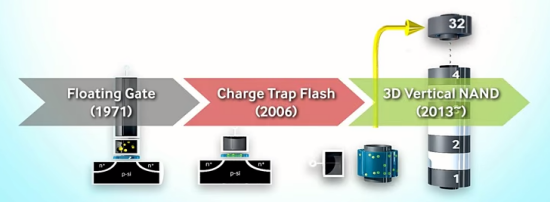

Model: Samsung SSD 850 EVO 120GB Solid State Drive
Manufacturer: Samsung Electronics
Provided By: Samsung America
Samsung Electronics has been a leader in the electronics industry for more than 30 years. Since the introduction of their first television in 1970, this Korean company has grown to become one of the world's leading electronics manufacturers, offering everything from tiny semiconductors to large home appliances. Samsung is no stranger to the storage industry either. Along with an assortment of DVD and Blu-ray Disc drives, the company offers both hard drive and flash based storage solutions for the portable and desktop computer markets.
Samsung is also one of the world's leaders in advanced memory technology. In August of 2013, the company introduced the industry’s first three-dimensional (3D) Vertical NAND (V-NAND) flash memory. To break through the scaling limit for existing NAND flash technology, 3D V-NAND utilizes Samsung’s proprietary vertical cell structure based on 3D Charge Trap Flash (CTF) technology and vertical interconnect process technology to link the 3D cell array. By applying both of these technologies, Samsung’s 3D V-NAND offers anywhere from two to ten times the reliability and twice the write performance of conventional 10nm-class floating gate NAND flash memory.

This fall, Samsung began mass producing the industry's first 3-bit 3D V-NAND flash memory. Designed for use in solid state drives, 3-bit V-NAND utilizes 32 vertically stacked cell layers to provide 128 gigabits (Gb) of memory storage per NAND memory chip. According to Samsung, the use of 3 bit-per-cell, 32-layer vertically stacked cell arrays also raises the efficiency of memory production. Compared to their 10nm-class 3-bit planar NAND flash, the new 3-bit V-NAND has more than twice the wafer productivity.
The first product to take advantage of 3-bit 3D V-NAND is Samsung's new 850 EVO SSD. Optimized for everyday computing, the 850 EVO is powered by one of two different controllers. While the 1TB drive is equipped with the same MEX controller found in the 840 EVO and 850 PRO, lower capacity versions get Samsung's new MGX controller. To compensate for the slow write speeds typically associated with 3-bit (TLC) NAND, the 850 EVO uses Samsung's TurboWrite write acceleration technology, which creates a high-performance write buffer in the SSD. It also supports Device Sleep (DEVSLP) for lower power consumption as well as self-encrypting drive (SED) technology that is TCG Opal 2.0 and IEEE-1667 compliant. Last, but not least, the 850 EVO supports Samsung's RAPID (Real-time Accelerated Processing of I/O Data) technology. By using free PC memory as a cache, RAPID can push the performance of the SSD beyond the limits of the current SATA specification.
The 850 EVO is available in a wide range of capacities from 120GB up to a massive 1TB. For this review, Samsung sent us the 120GB version of the drive which comes equipped with 256MB of on-board cache and is capable of delivering up to 550 MB/s sequential read and 520 MB/s sequential write speeds as well as up to 94,000 random read and 88,000 random write IOPS.
| Samsung SSD 850 EVO 120GB Solid State Drive | |||||||||||||||||||||||||||||||||||||||||||||||||||||
General Specifications
Performance
Reliability
Power Consumption
Environmental
Dimensions and Weight
Other Features
|
Needless to say, this is only a taste of what the 850 EVO has to offer. To give you an idea of what to expect, we'll take a closer look at Samsung's new SSD and then see how well it performs. Does the 850 EVO have what it takes? Can it deliver the performance and features that we've come to expect from Samsung? Keep reading as we find out.

